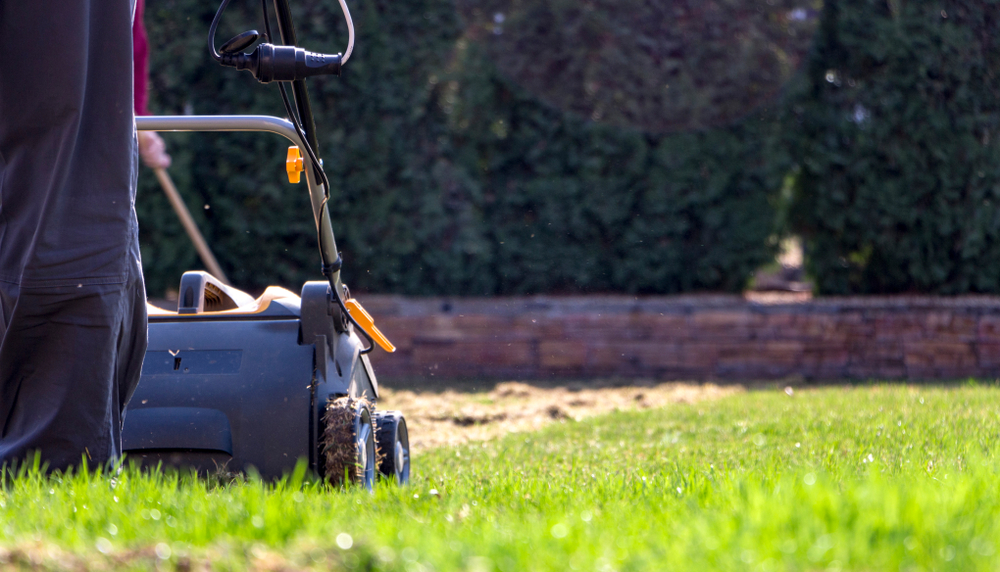A lawn scarifier or dethatcher is a tool that removes thatch from lawns. Thatch consists of a buildup of organic debris such as dead grass, leaves, stems, moss, and weeds. This buildup can keep water, oxygen, and nutrients from properly penetrating the soil to the roots of the grass. When that happens, a great deal of the moisture will just sit on the surface, which can further increase the growth of moss. In addition, thatch has a lot of carbon, but not much nitrogen, which is bad combination for anyone who wants to grow green grass. Left untreated, thatch can also serve as a breeding ground for insects and plant disease. In the worst-case scenario, thatch can kill a lawn altogether.
A lawn scarifier cuts through the topsoil, and breaks up the thatch. As it makes its way across the lawn it digs into the soil with sharp metal tines. This process aerates and loosens the soil, making it healthier and better able to grow seed. Scarifying also gets rid of moss and, as a bonus, removes most of any lurking weeds. Although similar to a cultivator, a scarifier digs more deeply into the soil, which makes it a very different tool.
If your thatch is more than half an inch deep, it’s time to scarify. Scarifying is usually done in the fall or spring, but it can be done any time you need to remove thatch or prepare some land for a new garden. After using a scarifier to deal with thatch, it’s a good idea to leave a little of the thatch behind, so that it can decompose and feed the soil. A lawn sweeper can take care of the rest.
Lawn scarifiers come in a variety of different forms. The basic, manual scarifiers look a lot like manual lawn mowers, with the exception of the tines on the end. They operate like manual mowers as well, with the user pushing it across the lawn. These work best when dealing with a smaller area of grass. For larger lawns there are self-propelled scarifiers that the user guides by hand but are propelled by an engine. These are able to dig deeper because they’re heavier, which makes them better suited for bigger jobs. For really big jobs, there are tractor-pulled scarifiers.
Whichever lawn scarifier you choose should have vertical knife blades, because those are the most effective at removing thatch. For the first pass use one of the shallower settings for the blades. After the first pass, slightly increase the setting of the blade depth, and change the angle. Repeat this pattern until the thatch is properly broken up. While it may be tempting to just put the thing on its deepest setting and get it all done in one go, that’s a bad idea. You could end up ripping up your entire lawn and kill a good chunk of it to boot. The goal here is to leave a 75% of your lawn intact at a minimum.
